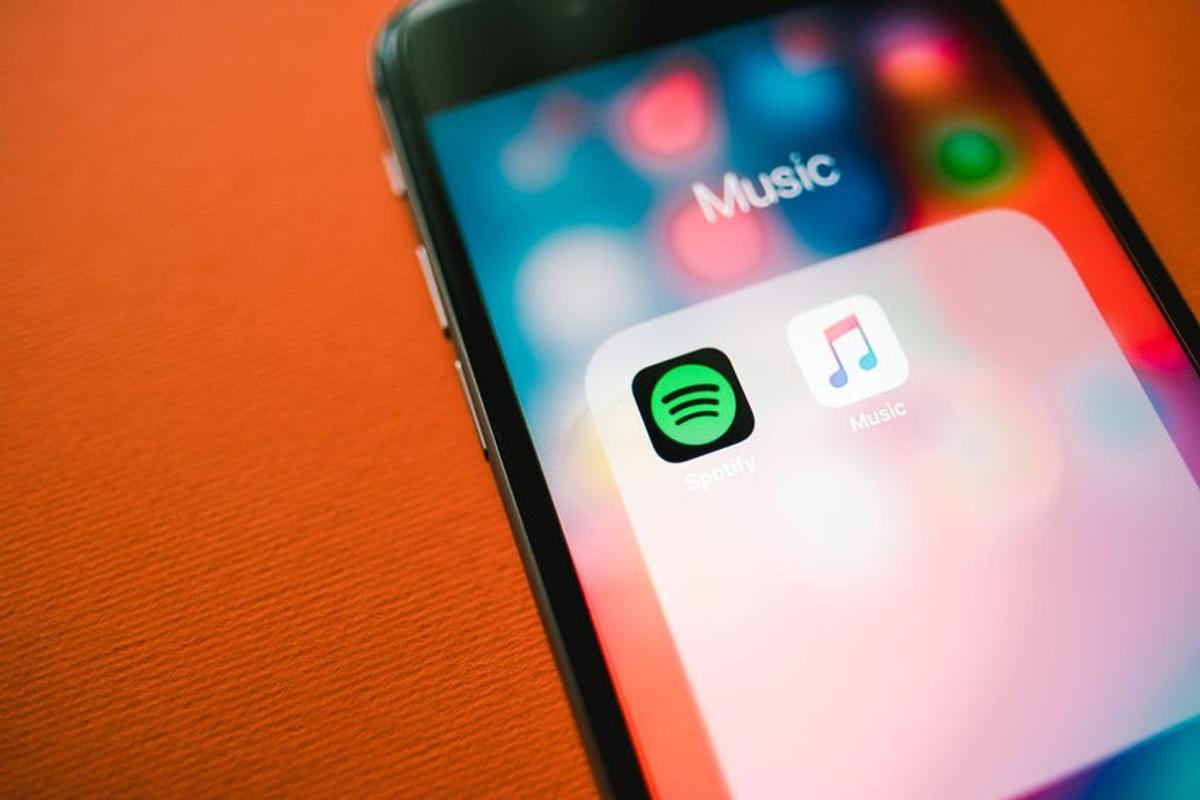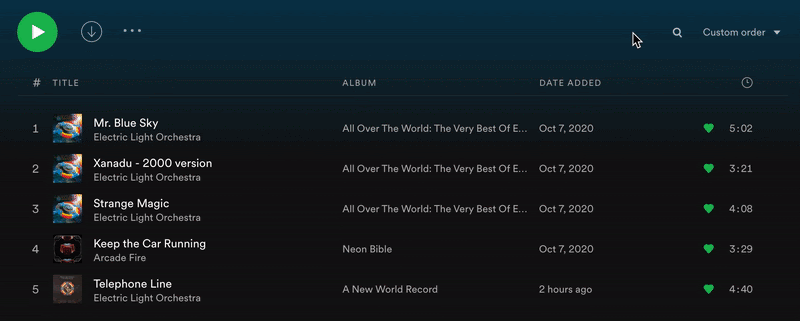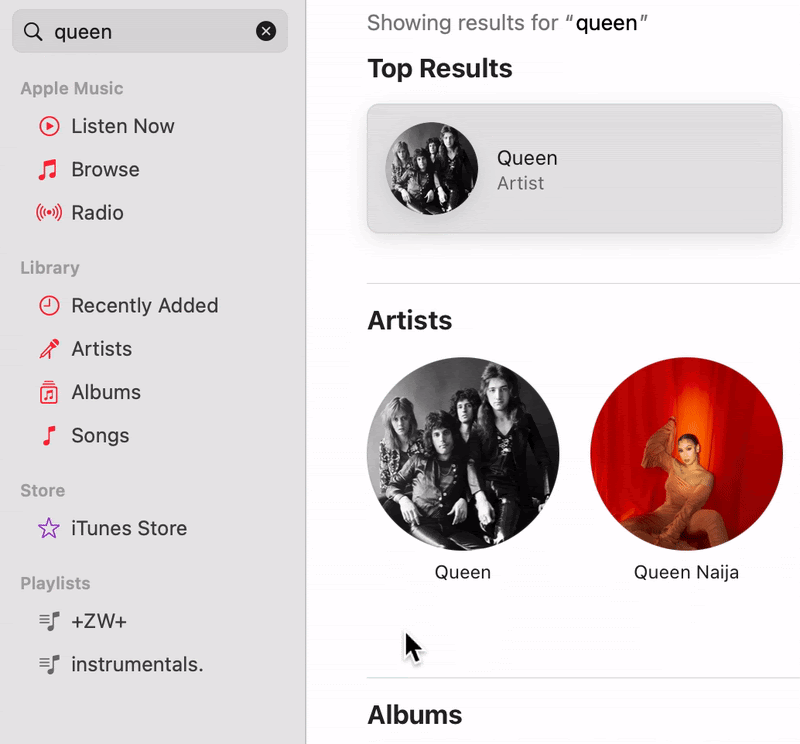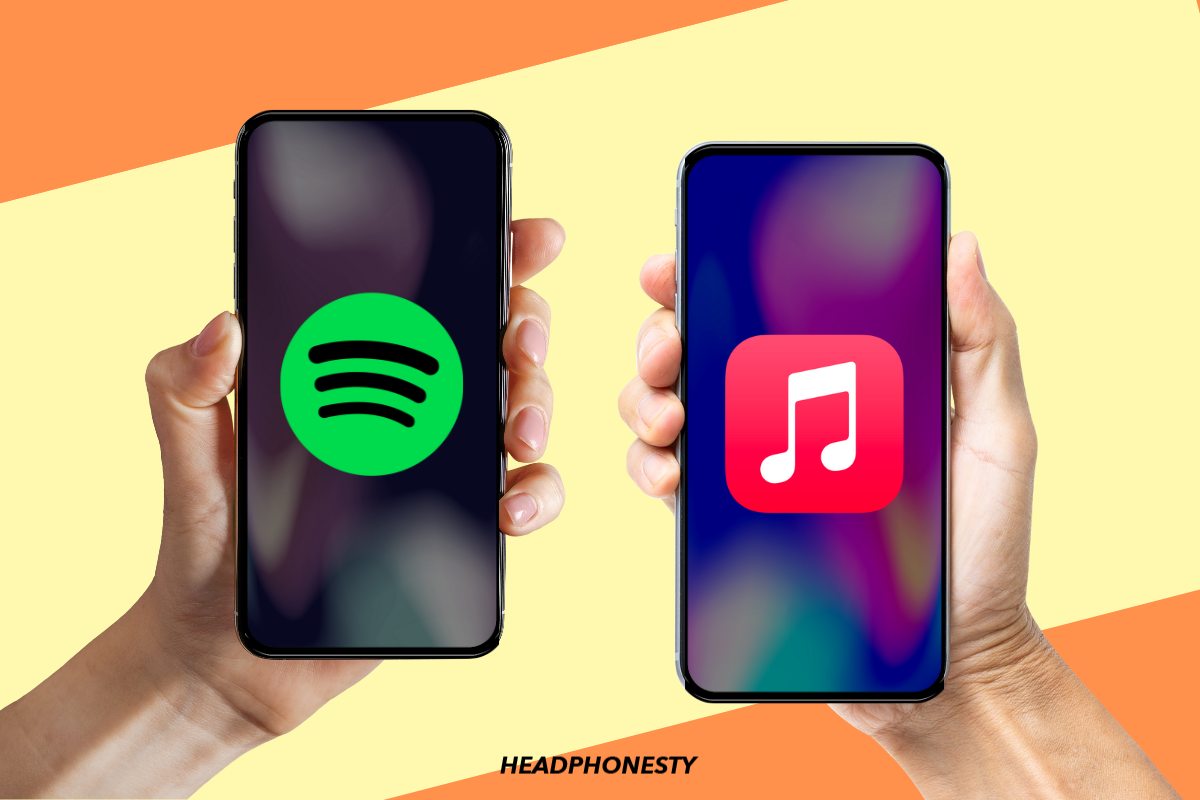The ultimate face-off between the streaming giants: Spotify and Apple Music
Spotify and Apple Music dominate the music streaming industry due to their vast music libraries, exceptional audio quality, and diverse non-music content.
It can be difficult to choose between the two, especially if you need to decide whether to value Spotify’s extensive podcast library or Apple Music’s lossless audio.
Analyzing their features offers insight into each platform, so we’ve researched and reviewed both to compile this guide for you.
- Apple Music vs Spotify: Comparison Overview
- Apple Music Supports Lossless Audio, Spotify Doesn’t
- Spotify Has More Flexible Plans
- Apple Music’s Music Library Is More Thoughtful and Inclusive
- Spotify Offers More Non-Music Content Than Apple Music
- Spotify Triumphs in Music Discovery
- Apple Music’s Interface Makes More Sense and Functionality
- Both Apple Music & Spotify Have a Bunch of Additional Features
- Apple Music vs Spotify: Which Should You Go For?
- Frequently Asked Questions
- Apple Music vs Spotify: Comparison Overview
- Apple Music Supports Lossless Audio, Spotify Doesn’t
- Spotify Has More Flexible Plans
- Apple Music’s Music Library Is More Thoughtful and Inclusive
- Spotify Offers More Non-Music Content Than Apple Music
- Spotify Triumphs in Music Discovery
- Apple Music’s Interface Makes More Sense and Functionality
- Both Apple Music & Spotify Have a Bunch of Additional Features
- Apple Music vs Spotify: Which Should You Go For?
- Frequently Asked Questions
Apple Music vs Spotify: Comparison Overview
| Category | Spotify | Apple Music |
|---|---|---|
| Free Plan | Yes | No |
| Premium Individual | $10.99/month | $10.99/month |
| Premium Family | $16.99/month | $16.99/month |
| Premium Student | $5.99/month | $5.99/month |
| Special Plans | Premium Duo: $14.99/month Premium Mini: $0.03 for a week | Voice: $4.99/month |
| Amount of music content | >100 million songs | > 100 million songs |
| Podcasts and Audiobook availability | Yes | N/A (separate services) |
| Maximum Audio Quality | 320 kbps | Up to 24-bit/192 kHz |
| Exclusive features | Discovery mode, collaborative playlist, AI Dj | Saylists, Music videos, Sing, Radio stations |
| Artist Payout | $0.0033 - $0.005/stream | $0.01/stream |
Apple Music Supports Lossless Audio, Spotify Doesn’t
Here’s what kind of audio quality you can expect from each:
| Audio quality setting | Spotify | Apple Music |
|---|---|---|
| Automatic/High Efficiency | Depends on connection | 64 kbps to 256 kbps depending on connection |
| Low | 24kbps | N/A |
| Normal | 96kbps | N/A |
| High | 160kbps | 256kbps |
| Very High | 320 kbps | N/A |
| Lossless | N/A | Up to 24-bit/48 kHz |
| High-Res Lossless | N/A | Up to 24-bit/192 kHz |
As you can see, Apple Music supports high-resolution lossless settings up to 24-bit/192 kHz, so it outshines Spotify in terms of audio quality.
Apple Music also maintains its edge over Spotify by offering support for Spatial Audio enriched with Dolby Atmos surround sound technology.
This cutting-edge feature transforms your listening experience into a three-dimensional sonic journey. Hence, it feels like you’re hearing sounds from all directions instead of the typical stereo (left and right).
But don’t get too excited about Apple Music yet, there’s a catch. Not all devices can totally support lossless audio, not even Apple’s AirPods, AirPods Pro, and AirPods Max. This is because lossless audio requires certain minimum specifications. One of those is to use wired headphones instead of wireless ones.
So, to try Apple Music’s High-Res lossless setting, you must invest in a good digital-to-analog converter (DAC) and high-quality wired headphones. Unfortunately, these are additional costs a lot of casual listeners won’t be willing to make.
Spotify Has More Flexible Plans

| Category | Spotify | Apple Music |
|---|---|---|
| Free Plan | Yes | No |
| Premium Individual | $10.99/month | $10.99/month |
| Premium Family | $16.99/month | $16.99/month |
| Premium Student | $5.99/month | $5.99/month |
| Special Plans | Premium Duo: $14.99/month Premium Mini: $0.03 for a week | Voice: $4.99/month |
While Spotify and Apple Music share similar plan rates, Spotify sets itself apart in this category with a range of additional offerings.
Sure, Apple Music’s Voice Plan stands out as a cost-efficient option for those entrenched in the Apple ecosystem. Plus, the absence of address-sharing requirements for Family plans is super convenient.
However, you’ll benefit from more plan options with Spotify Premium Mini, which is a 7-day plan for one device in select countries, and Premium Duo. Not to mention the availability of additional services like Spotify Kids on the Family plan and Hulu and SHOWTIME on the Premium Student plan, which, in my opinion, gives Spotify a leg-up over Apple Music.
Unlike Apple Music, Spotify also comes with a free, ad-supported plan. With this, you can listen to everything in Spotify’s content library at the expense of having to listen to ads from time to time. On-demand playback is somewhat restricted, though, so you can only listen to some playlists in shuffle mode.
If you have children, have budget constraints, or want to get the best value for your buck, Spotify is the preferable choice.
Apple Music’s Music Library Is More Thoughtful and Inclusive
Both platforms have excellent mainstream and indie libraries that would make any music fan happy. They have current hits, local and world song charts, and various music categories to explore. Both apps have also tapped record labels and publications to help curate better indie playlists.
However, Apple Music triumphs in this comparison with thoughtful curation and fleshed-out music categories.
For example, both Spotify and Apple Music have a category dedicated to the people behind the music – Songwriters and Behind the Songs. Spotify’s Songwriters simply focuses on songwriters.
In contrast, Apple Music goes the extra mile by featuring songwriters, singer-songwriters, producers, and session musicians. The app’s library is also thoughtfully presented in hundreds of genre- and mood-specific playlists.
On the Browse page, you’ll find fresh music picks in sections like Playlists You Need, Must-Have Music, and We’re Loving, all curated by Apple Music editors. Keeping up with the latest releases is easy with New Music and Daily Top 100, which features the 100 most-played hits in over 115 territories.
Like Spotify, Apple Music has all the popular music genres covered. However, Apple Music has more fleshed-out genres with over 100 options compared to the 57 offerings in Spotify’s catalog.
I also think many of Apple Music’s categories, such as Indigenous Australia, Schlager, and Behind the Songs, are interestingly specific.
Spotify Offers More Non-Music Content Than Apple Music
When it comes to non-music content, Spotify is best known for its wide range of podcasts. Through the acquisition of podcast production companies like Gimlet Media, Anchor, Parcast, and The Ringer, the app now hosts as many as five million titles.
In addition to traditional podcasts, Spotify introduced video podcasts in 2020. This opened the doors for creators to upload video content to their existing audio shows.
A live audio feature is also in the works after the acquisition of Betty Labs and Locker Room in March 2021. Locker Room is a live sports talk app that Spotify aims to develop further to “offer a range of sports, music, and cultural programming.”
In 2020, Spotify also partnered with Riot Games and League of Legends (LoL). The deal makes Spotify the exclusive streaming partner for all official LoL content, including original podcasts.

Aside from podcasts, Spotify also has a selection of audiobooks ranging from classic literature, poetry, language learning, and children’s stories, to name a few.
On the other hand, Apple Music does indeed offer a lot of video content and radio programs. However, most of this content is focused solely on music and live radio.
Spotify Triumphs in Music Discovery
| Discovery Feature | Spotify | Apple Music |
|---|---|---|
| Search (Spotify) |
|
|
| Playlist Recommendations | Recommended Songs | Simpler Recommendations |
| Personalized Mixes | “Made For You”
| “Made for You”
|
| Artist Profile Recommendations | “Fans Also Like” | “Similar Artists” |
Spotify uses three different types of algorithms – Collaborative Filtering, Natural Language Processing, and Raw Audio Modeling to streamline its suggestions. The app also factors in user inputs, like in-app activity, genres you listen to, musical elements, and even the time of day.

It goes even further by providing recommendations within playlists you’ve created. It’s a feature not available on Apple Music and one that I sorely missed while using the app.
In contrast, Apple Music uses a simpler algorithm that analyzes your listening history and song ratings. But for the most part, human curation is still the driving force behind Apple Music’s recommendations.
Both platforms also feature artist recommendations on artist profiles to help listeners discover new music. However, Apple Music will only give you a maximum of 8 suggestions, while Spotify offers as many as 20.
Apple Music’s music discovery features are somewhat limited and leave you looking for more. It also feels like the app takes longer to calibrate to your tastes, and it requires a lot of “Liking” and “Disliking” to train the algorithm. Despite that, it does get the job done – eventually.
However, Spotify catches on more quickly and does a better job connecting you with music you’re sure to love and tunes you didn’t know you needed in your life.
Apple Music’s Interface Makes More Sense and Functionality
On Apple Music, there is a customizable sidebar that allows you to choose what content sections you want to see. This significantly improves navigation and ease of use. The scrolling lyrics function is also fun and helpful for those who enjoy singing along.

Another stand-out feature is Apple Music’s search function. You can find a song within seconds by typing in lyrics, which is incredibly helpful, especially when looking for a song you only heard in passing. Spotify has the same features, but the results might not be as accurate.
On the other hand, Spotify’s mobile and desktop apps’ playlists have a helpful sorting feature that lets you reorder songs by title, artist, date, or duration.
With larger playlists, you can easily find what you want with the “Search in playlist” function. You can also save songs to your library and refine your recommendations by “liking” a song or pressing the heart icon.
Both Apple Music & Spotify Have a Bunch of Additional Features
In terms of additional features that enhance the music listening experience, both Spotify and Apple Music are evenly matched.
For example, Spotify’s Wrapped is only available at the end of each year. But it’s always something nice to look forward to.

Meanwhile, users can access Apple Music Replay all year round, but the feature would’ve been better if it gave users more than just a simple playlist of songs.
Spotify’s Collaborative playlists make music listening more fun because you can create and develop playlists with friends. On the other hand, Apple Music focuses more on sharing playlists than creating them together, which tends to feel like a one-person party.
One unique feature on Spotify, however, is the Spotify DJ, a new feature that delivers a personalized radio show just for you.
It uses generative AI and OpenAI technology to curate a playlist based on the music you like. And with the help of a dynamic AI voice platform, an AI DJ will deliver interesting facts and trivia about the songs or artists you’re listening to.
It’s a pretty cool feature if you want something different than traditional radio. But it mostly just sends you music that you’re already listening to so its real advantage is debatable.
Apple Music vs Spotify: Which Should You Go For?
Here’s a little recap of everything we’ve covered so far:
| Spotify | Apple Music |
|---|---|
| More subscription flexibility and perks | Large music library and excellent curation |
| Massive music library | New release and artist exclusives |
| Better content diversity with podcasts | Lots of exclusive and original video content |
| Better music discovery algorithm | Access to live radio programming |
| Good design and is easy to use | Higher audio quality |
| More intuitive user controls | |
| Better streaming payouts |
Choosing between Apple Music and Spotify all boils down to your priorities.
For example, Spotify takes the lead in music discovery and offers a vast array of podcasts and audiobooks.
Apple Music, on the other hand, is a music-centric platform, with a strong focus on quality, including lossless and spatial audio. It is the go-to choice for music videos, live performances, documentaries, and exclusive content.
Read our comprehensive review on Apple Music and Spotify to gain more insight into what the two platform offers.
Frequently Asked Questions
- Why do people prefer Spotify?
- Who has more users, Apple Music or Spotify?
- Who treats artists better, Spotify or Apple Music?
Why do people prefer Spotify?
People prefer Spotify because it offers a unique social aspect to music streaming, allowing users to connect with friends, create playlists together, and engage in features like Spotify Wrapped. This social integration enhances the overall convinence and user experience.
Who has more users, Apple Music or Spotify?
Spotify has a larger user base than Apple Music, with over 551 million users, including 220 million Premium subscribers worldwide. Apple Music follows behind, boasting more than 88 million users globally.
Who treats artists better, Spotify or Apple Music?
Apple Music treats artists better than Spotify with a higher per-play rate, fair compensation for all creators, and no pay-for-play scheme.
Apple Music pays $0.01 per play, while Spotify offers $0.0033 – $0.005, partly due to its ad-supported free tier and regional subscription rates. Spotify’s Discovery Mode sacrifices royalties for artist visibility, while Apple Music’s playlists are merit-based and maintain consistent compensation.

As an independent musician, I am appalled by Spotify’s new form of payola. Not to mention all of the scam artists who have become “promoters” on social media, and get people to pay them to get their music heard on Spotify. I see a class action suit in the near future. Apple is one of the few companies that has some integrity left. And I really respect the fact that they respect artists, and still use human generation and not just algorithms. And the lossless audio and Dolby Atmos blows Spotify out of the water, if you care about sound quality. Personally, I don’t see why anybody would go to Spotify over Apple Music
Spotify is much more better.
Dolby Atmos is sh*t and useless,
Looseless audio is useless to, because u need a DAC for enjoy.